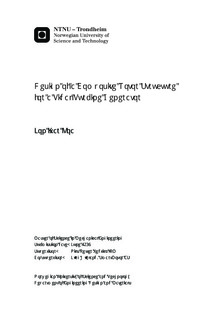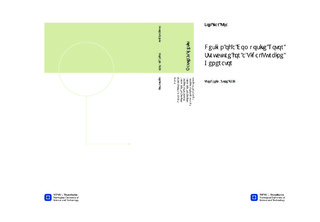| dc.description.abstract | Reduction targets for greenhouse gas emissions and the need of national energy security has led to a push in R&D of renewable energy sources such as tidal power the recent years. SmartMotor AS has engineered a tidal energy generator prototype, which is cur-rently being deployed in the sea. The magnetic core in the generator s rotor must be rela-tively thick to avoid losses caused by induced eddy currents in the underlying steel carry-ing structure. A non-magnetic carrying structure can potentially reduce the thickness of this member, resulting in lower overall mass and inertia. The purpose of this study was to enable this reduction through a redesign of the rotor structure utilizing non-magnetic composite materials.
A non-magnetic composite rotor structure, which seems possible to manufacture, have been proposed and analysed implementing design philosophy from the DNV-OS-C501 Composite Components standard. The standard was not followed in detail, but the re-sults can be used to indicate the feasibility of the proposed composite structure.
A bolted composite joint between the shaft and the rotor structure was designed and ana-lysed in detail utilizing FEA including a contact analysis. Local stresses caused by the generator torque load were found acceptable, and alternative joints were discussed. Solu-tions for improving the stiffness of the structure were evaluated. FEA indicated that the stiffness of the proposed structure is sufficient to avoid resonance from relevant excita-tion sources, and to keep global displacements from static load cases within specifica-tions. The local stress response of the structure to a set of static load cases was shown to be within material strength limits. Linear elastic buckling eigenvalue analyses indicated low risk of local and global buckling.
The proposed composite structure gives a reduction in weight (28%) and inertia (34%) compared to the original rotor with a steel structure. The use of a composite structure seems therefore possible, but testing and analyses with more realistic load cases following the standard are required for verification. Before deciding to go further with a composite structure, a cost comparison of the existing- the new- and alternative non-magnetic struc-tures should be performed. | |

